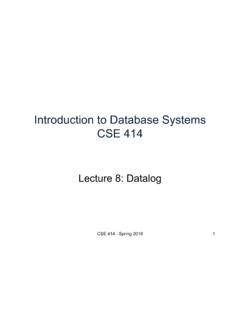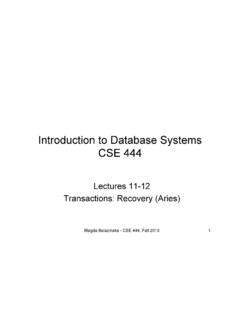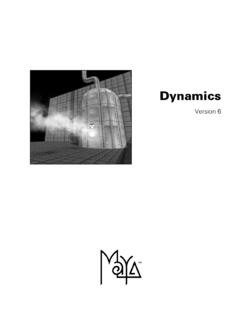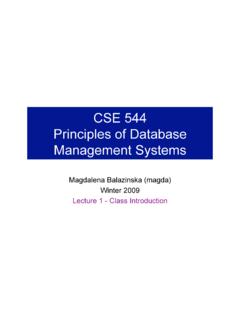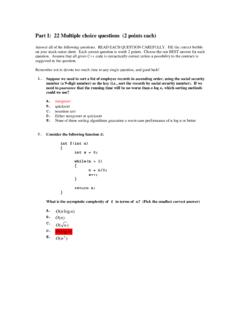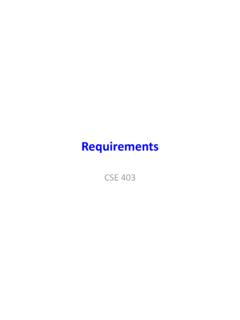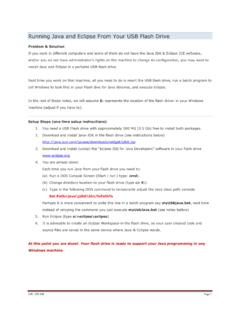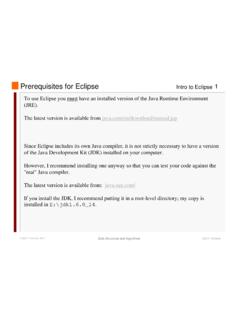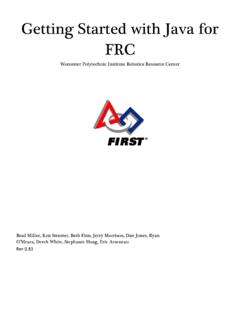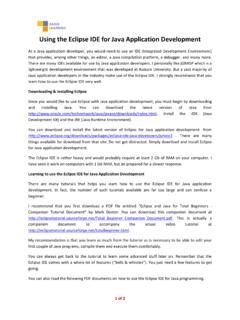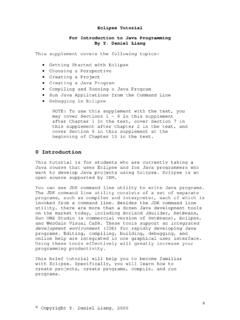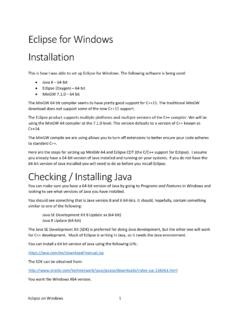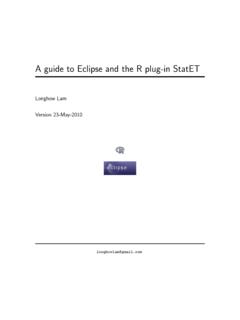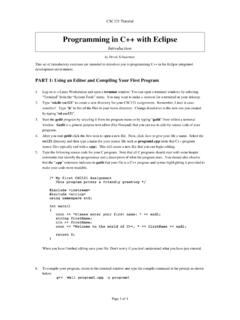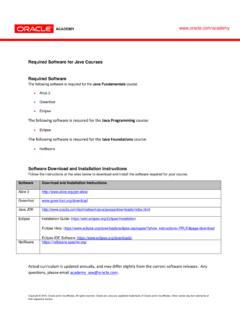Transcription of Building Projects in JDK 1.7 (Java 7) using Eclipse
1 Building Projects in JDK ( java 7) using Eclipse In Eclipse , you can see which version of JDK you have by navigating to Window -> Preferences (On MAC, Preferences is located under Eclipse , not Window) Under preferences, you will see which versions of the JDK you currently have installed on your machine. If JDK is already installed, simply click the checkbox next to it and press Apply to update your JDK. Following is a section on how to install JDK ( java 7) if you do not currently have it installed on your machine. In order to install JDK , you ll need to download the version from the java Archive Page ( ). From here, choose the installation appropriate for your OS and accept the license agreement. Clicking on any download option will take you to a login screen for Oracle.
2 Oracle now requires that you create an account prior to installing any archived version of java . Simply create an account and sign in to finish the download. Save the executable file and run it to start installing JDK Keep track of the directory the JDK is installed to as you ll need to navigate to this directory in Eclipse later. Pressing Next for all the installation steps and close the installer once it has finished. With the new JDK installed, navigate back to the pane in Eclipse where you can select your desired JDK to build your Projects (under Preferences window). To add a new JDK to Eclipse , click the button on the right. Choose the Standard VM option and press Next. Press the Directory button which prompts you to navigate to where you installed the JDK on your computer.
3 Select the broadest directory and press Ok. The pane should populate with libraries now with the JDK successfully selected. Click Finish to finalize adding the JDK to Eclipse . Click the checkbox next to the newly installed JDK to make it the new JDK used for Building your Projects and hit Apply. Note that updating the JDK on Eclipse may cause your JUnit tests to no longer run correctly (and produce errors when attempting to run them). To restore your JDK back to , simply go to this Preferences tab, click the checkbox next to JDK , and Apply the new settings. In order to build your Jar in java ( java 7), you ll have to change the project -specific compiler for your cse331 project . To do this, right click your cse331 folder and choose Properties.
4 In the pane that appears, click on java Compiler (not the drop-down menu, simply click on java Compiler ) and click the checkbox to Enable project specific settings. Then, under the Compiler Compliance Level change this from to Note that all the settings beneath Compiler Compliance Level should also update to be now. If not, change these settings manually to make sure they are all JDK rather than Click Apply to save the settings and continue. To perform a Clean build of your project in the new JDK and compiler compliance, at the top of Eclipse click on project then In the pane that opens, make sure the checkbox adjacent to your cse331 project is selected then press Ok to continue. Your project should now be entirely rebuilt using JDK ( java 7).
5 You re now ready to create the Jar for all your Projects ! Perform a Git Pull on your repository to download the latest files including the file to create a Jar for this assignment. To build your homework Projects as a Jar, the file will need to be inside your cse331 directory, just outside your src directory. It should be in this location by default when pulling the homework assignment to your repository. Inside Eclipse , open your cse331 folder and find the file. You may have to right click your cse331 directory and Refresh to make it appear. Right click the file and navigate to Run As -> Ant Be sure to choose the selection with the ellipses Ant because you ll want to change some of the build settings before we run the file!
6 In the pane that opens, uncheck the clean and build options and ensure that the build-jar option is checked. Eclipse builds your Projects automatically so attempting to run the Ant Build with the default build selected will actually result in an IOException being thrown. Hit Apply to save the changes then hit Run to start the build. The Jar should now be made in your cse331 folder inside your Eclipse project . Navigate to your cse331 folder of your Eclipse project in your system file explorer. You should see the newly created Jar file, cse331-hws, inside this folder.



